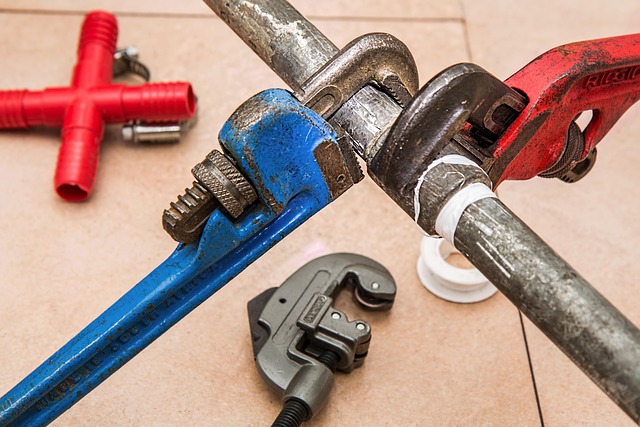Portable Laser Welders Improve Accuracy and Efficiency in United States
In United States, portable laser welders are transforming the welding landscape, improving precision, saving time, and reducing costs. This technology is particularly advantageous in various sectors, such as manufacturing and construction. A closer look at the different models, pricing structures, and practical applications reveals their growing importance in welding production processes. Furthermore, effective welding training for workers is essential to maximize the potential of these advanced machines.

The welding industry in the United States has witnessed significant technological advancement in recent years, with portable laser welders standing out as a game-changing innovation. These devices combine the precision of laser technology with the convenience of portability, enabling professionals to perform high-quality welds in diverse settings. From automotive repair shops to aerospace manufacturing facilities, portable laser welders are proving their value by improving accuracy, reducing production time, and expanding the range of materials that can be effectively joined.
What are portable laser welders and what are their advantages?
Portable laser welders are compact welding systems that use concentrated laser beams to melt and fuse metal surfaces together. Unlike traditional arc welding equipment, these devices generate heat through photon energy rather than electrical current, resulting in a highly focused and controllable heat source. The portability aspect means these units can be moved to different work locations, making them especially valuable for field repairs, maintenance operations, and facilities with limited space.
The advantages of portable laser welders are numerous and compelling. First, they produce exceptionally narrow heat-affected zones, which minimizes thermal distortion and reduces the need for post-weld finishing work. This precision makes them ideal for joining thin materials, dissimilar metals, and components with tight tolerances. Second, the welding speed is significantly faster than conventional methods, often completing joints in a fraction of the time required by MIG or TIG welding. Third, these systems generate minimal spatter and fumes, creating a cleaner and safer working environment. Fourth, the non-contact nature of laser welding reduces tool wear and eliminates the need for frequent consumable replacement. Finally, the ability to work on-site eliminates the cost and logistical challenges of transporting large components to a fixed welding station.
In which industrial sectors is laser welding used?
Laser welding technology has found applications across a wide spectrum of industries throughout the United States. The automotive sector represents one of the largest users, employing laser welders for everything from body panel assembly to transmission component repair. The precision and speed of laser welding make it particularly valuable for high-volume production lines where consistency and efficiency directly impact profitability.
The aerospace industry relies heavily on laser welding for joining lightweight alloys and titanium components where strength-to-weight ratios are critical. Medical device manufacturers use laser welding to create hermetic seals on implantable devices and to join small, delicate components that would be damaged by traditional welding heat. The electronics sector benefits from laser welding when assembling battery packs, sensors, and other miniature components where precision is paramount.
Jewelry makers and repair specialists have embraced portable laser welders for their ability to perform delicate repairs without damaging gemstones or adjacent metal surfaces. Tool and die makers use laser welding to repair expensive molds and dies, extending their service life and reducing replacement costs. The energy sector, including oil and gas operations, employs portable laser welders for pipeline repairs and maintenance in remote locations. Even the dental industry has adopted laser welding for fabricating and repairing prosthetics and orthodontic appliances.
Cost Considerations for Portable Laser Welders
Investing in portable laser welding equipment requires careful consideration of both initial purchase costs and long-term operational expenses. The market offers various options at different price points, reflecting differences in power output, features, and build quality.
| Equipment Type | Provider Examples | Cost Estimation |
|---|---|---|
| Entry-Level Handheld Units | LaserStar, Rofin | $8,000 - $15,000 |
| Mid-Range Portable Systems | IPG Photonics, Coherent | $15,000 - $35,000 |
| Professional-Grade Equipment | Trumpf, Precitec | $35,000 - $75,000 |
| High-Power Industrial Units | Prima Power, Bystronic | $75,000 - $150,000+ |
Prices, rates, or cost estimates mentioned in this article are based on the latest available information but may change over time. Independent research is advised before making financial decisions.
Beyond the initial equipment investment, operators should budget for maintenance contracts, replacement optics, protective equipment, and training programs. However, many facilities find that the increased productivity, reduced material waste, and lower consumable costs result in a favorable return on investment within two to three years of operation.
Why is laser welding training essential?
While portable laser welders are more user-friendly than their industrial predecessors, proper training remains absolutely essential for safe and effective operation. Laser welding involves working with Class 4 lasers, which pose serious risks to eyesight and skin if safety protocols are not followed. Comprehensive training programs teach operators about laser safety standards, proper use of protective equipment, and emergency procedures.
Beyond safety considerations, training ensures operators understand how to optimize welding parameters for different materials and joint configurations. Variables such as laser power, pulse duration, focal distance, and travel speed must be adjusted based on material thickness, composition, and desired weld characteristics. Without proper training, operators may produce weak welds, damage workpieces, or fail to achieve the quality improvements that justify the equipment investment.
Training also covers maintenance procedures that keep equipment operating at peak performance. Operators learn to recognize signs of optical degradation, contamination, or alignment issues that could compromise weld quality or damage expensive components. Many equipment manufacturers and independent training organizations offer certification programs ranging from basic operation to advanced troubleshooting and parameter optimization.
For facilities in the United States, training investments typically range from several hundred dollars for basic operator courses to several thousand dollars for comprehensive programs covering multiple materials and applications. Some manufacturers include initial training as part of the equipment purchase, while others offer ongoing educational resources and technical support. Given the precision and cost of laser welding equipment, adequate training should be viewed as a necessary investment rather than an optional expense.
The Future of Portable Laser Welding
As laser technology continues to advance, portable welders are becoming more powerful, efficient, and affordable. Improvements in fiber laser technology have reduced equipment size while increasing reliability and reducing maintenance requirements. Software enhancements provide operators with real-time feedback and automated parameter adjustment, making it easier to achieve consistent results across different materials and joint designs.
The growing adoption of portable laser welders reflects broader trends in American manufacturing toward greater flexibility, quality, and efficiency. As more industries discover the benefits of this technology, training programs are expanding, and a skilled workforce is developing to support continued growth. For businesses evaluating welding solutions, portable laser systems represent a forward-looking investment that addresses current needs while positioning operations for future competitiveness in an increasingly demanding marketplace.




